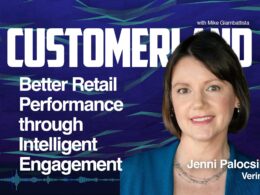Relationshipping is everything the brand does across the journey and all touchpoints to grow a sticky, strong lifetime value customer base.
For years the various critical, basic elements of “marketing” have been functionally separated. Acquisition has been one part of the plan. Once a lead becomes a customer, the customer base tends to be managed with a singular focus, Customer Relationship Management (CRM). Loyalty programs are managed in the CRM function, although sometimes the sign up is pulled into acquisition communications. Dealing with attrition using win-back programs is sometimes in the CRM manager’s hands, but sometimes it has a silo focus. Another very big area of engagement has lived outside of marketing for a long time: Public Relations. With the rise of the digitally connected customers in social media, and the importance of joining the conversations there with your brand content, social media is often allocated to the PR department and agencies. The website is often managed by a separate group, as are the call center functions. What is my point?
To get the most from your customer engagement budgets you need an enterprise-wide focus on the customer journey across all the brand touchpoints (which are likely not optimally connected because of siloing).
You need to have a Relationshipping Plan (RPlan) that is overarching to all efforts to engage, retain, grow, and then, when necessary, win back customers. Relationshipping is everything the brand does across the journey and all touchpoints to grow a sticky, strong lifetime value customer base. The RPlan unites the budgets and touches in general media, digital media, social media, sales promotion, PR, events, website and apps, call center, sales (in B2B) and any other place the brand meets the customer. It grounds results in the CLV measure. It forms the basis for optimum budget allocation. It seeks to connect the dots (all touchpoints across the journey) for a uniform, good customer experience. A marketing plan is just not designed to do this.
The reason for needing this new approach is that the customer is well connected to the brand, but many enterprises are simply not well connected to customers. The other huge difference in this approach is that it is bottoms up, whereas marketing plans have been top down. What we see is that most enterprises are partly fixed in the 20th Century approach where Branding, Positioning and general media awareness is where engagement plans begin. But as we now know, digital spend is greater than TV spend these days. The prospects and customers live online in the micro moment. We do not want to see you do a great job in general media only to have your competitors harvest the leads you generate because they do a better job in the digital foundation and pick off some of your leads.
Before embarking on this journey you’re going to need a Customer Data Platform (the CDP) and the analytics capabilities to evaluate results. If you focus on one metric to evaluate results, my choice is CLV (customer lifetime value) versus a silo middle metric (like Cost Per Lead, CPL, or Cost Per Visit, CPV and the like).
An RPlan will bring the brand organization together with a singular focus on growing the customer base. What are its elements?
The Relationshipping Plan
- Customer Base Growth Objectives
- Start with the Customer, and the customer base.
- This lays out the acquisition goals, but it also incorporates where the customer base is now, specifying existing customer revenue growth and retention goals, as well as the new customer acquisition goals.
- The goals for the customer base connect the acquisition, retention, loyalty and win back goals.
- The goals define what kind of customers to target with what products.
- The final plan illustrates the desired customer base and its elements at the end of the plan period.
- Customer Data Platform and Analytics
- Identify all sources and stores of customer data in the enterprise.
- All that data is pulled into a Customer Data Platform (CDP). The CDP defines how the prospect elements are constructed and maintained, as well as how customers are configured by personas and geography.
- Address the very difficult area of attribution. How are the acquisition channel middle metrics to be connected to the CLV final metric? Right now, this is complicated and messy.
- Put reporting and analysis in place that pushes towards real time allowing for faster adjustment to competition and results.
- IT Plan
- Get IT involved at the outset to understand/recommend all the digital channels and platforms in consideration, and to hear their recommendations for how to integrate and manage platform interactions.
- Let IT see and understand the customer journey connections between the links customers will use across touchpoints, and connection/transaction requirements.
- Make IT aware of and understand the requirements for the website, landing pages and micro sites.
- IT syncs the timing of having tech functionality up and running to support digital postings.
- Competitive Analysis
- What are the top two or three competitive brands/offerings to yours?
- What does a SWOT analysis of their offerings, versus a SWOT analysis of your offering suggest is the strongest attack point for you?
- What is the most important thing you can offer to a prospective customer to get a response and conversion?
- Relationshipping Strategy
- For each product and persona complete the Relationshipping Strategy exercise outlined in the article: Relationshipping Unifies Media.
- Prescribe the balance between Brand Message, Content, Offers and Calls to Action.
- Prescribe the experience desired at touchpoints.
- For each product/persona initiative draw the expected/ideal journey map.
- Define what research is needed to assist improvement in execution.
- Develop a testing strategy for optimization: channel mix A versus channel mix B, offer versus offer, creative A versus creative B, and – versus control – any other element that research indicates has leverage.
- Relationshipping Channels
- Based on the targets/journey maps define the channels needed across the journey to engage prospects and convert them into customers.
- Set the budget spends and expected responses from the efforts to create inputs to the budgets.
- Relationshipping Budgets
- Based on the channel activities and needed spends based on anticipated response, assemble the budgets by channel and touchpoint.
- Depending on your organization allocate budgets to the appropriate teams for execution.
- Ideal Spend: based on history review the first take budget, and adjust the allocations as suggested by historical results to optimize on CLV.
This is fluid. It’s not easy. Relationshipping is new. Planning that approaches all engagement activities from a connected, overarching, bottoms-up approach (customer-in versus brand-out) is new. You therefore must feel free to adjust the approach to fit your brand, products, the enterprise, and your organization. If you are not the CEO this cannot be done without their commitment. So, the first step is to get the CEO on board. Led from the top the entire management team must come together with this approach.
As usual we would like to hear from you about your thoughts, and frankly, the challenges you face to grow your customer base.
 George Wiedemann is founder and former CEO of Grey Direct, former CEO of Responsys, and former CEO of The DRUM Agency. He is now founder and current CEO of Relationshipping Consulting, focusing on bringing efficiencies to large-scale enterprises through deep budgetary analysis and process alignment. George is also a frequent contributor to TheCustomer.
George Wiedemann is founder and former CEO of Grey Direct, former CEO of Responsys, and former CEO of The DRUM Agency. He is now founder and current CEO of Relationshipping Consulting, focusing on bringing efficiencies to large-scale enterprises through deep budgetary analysis and process alignment. George is also a frequent contributor to TheCustomer.
Photo by René Riegal on Unsplash.













2 comments